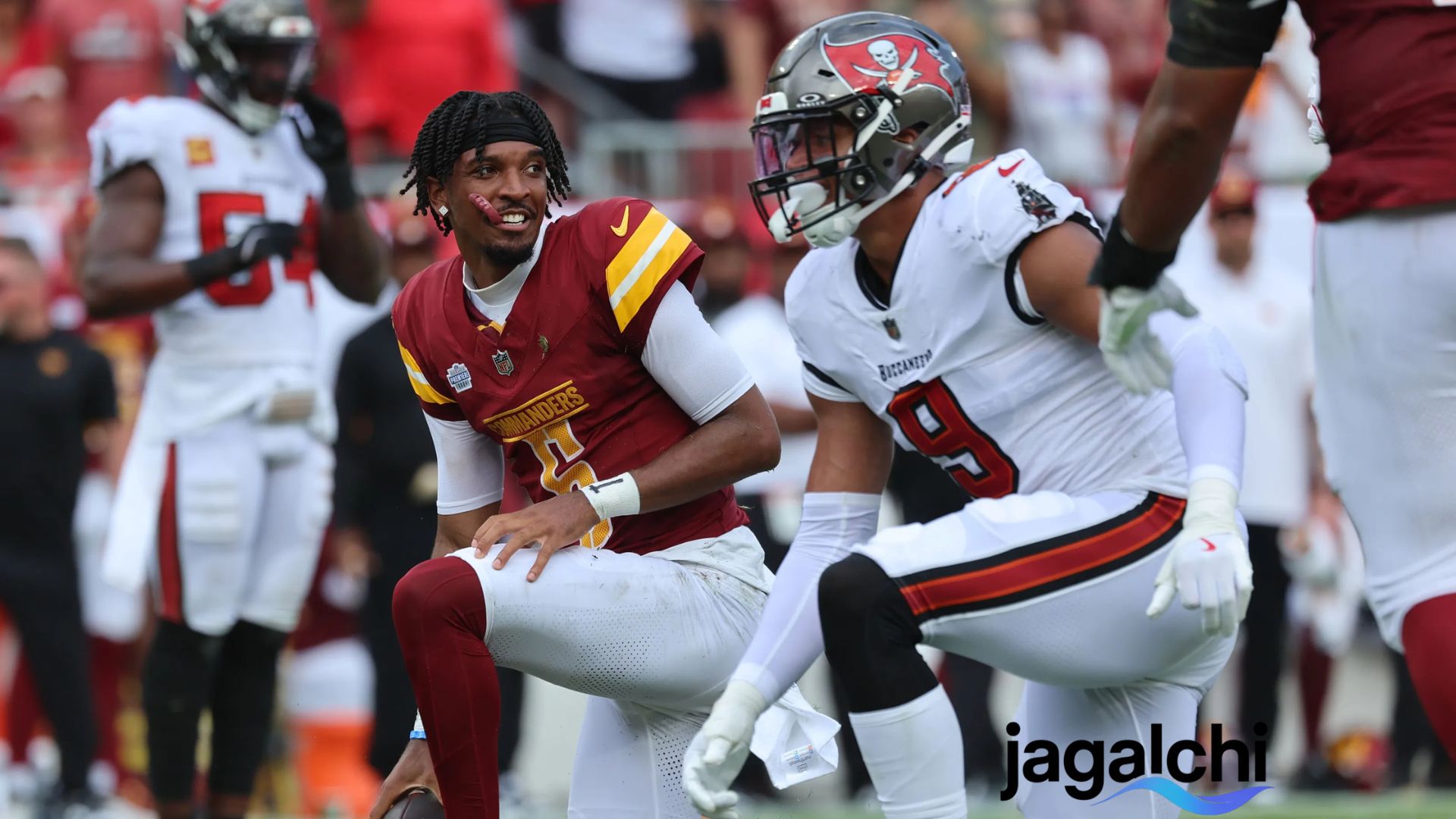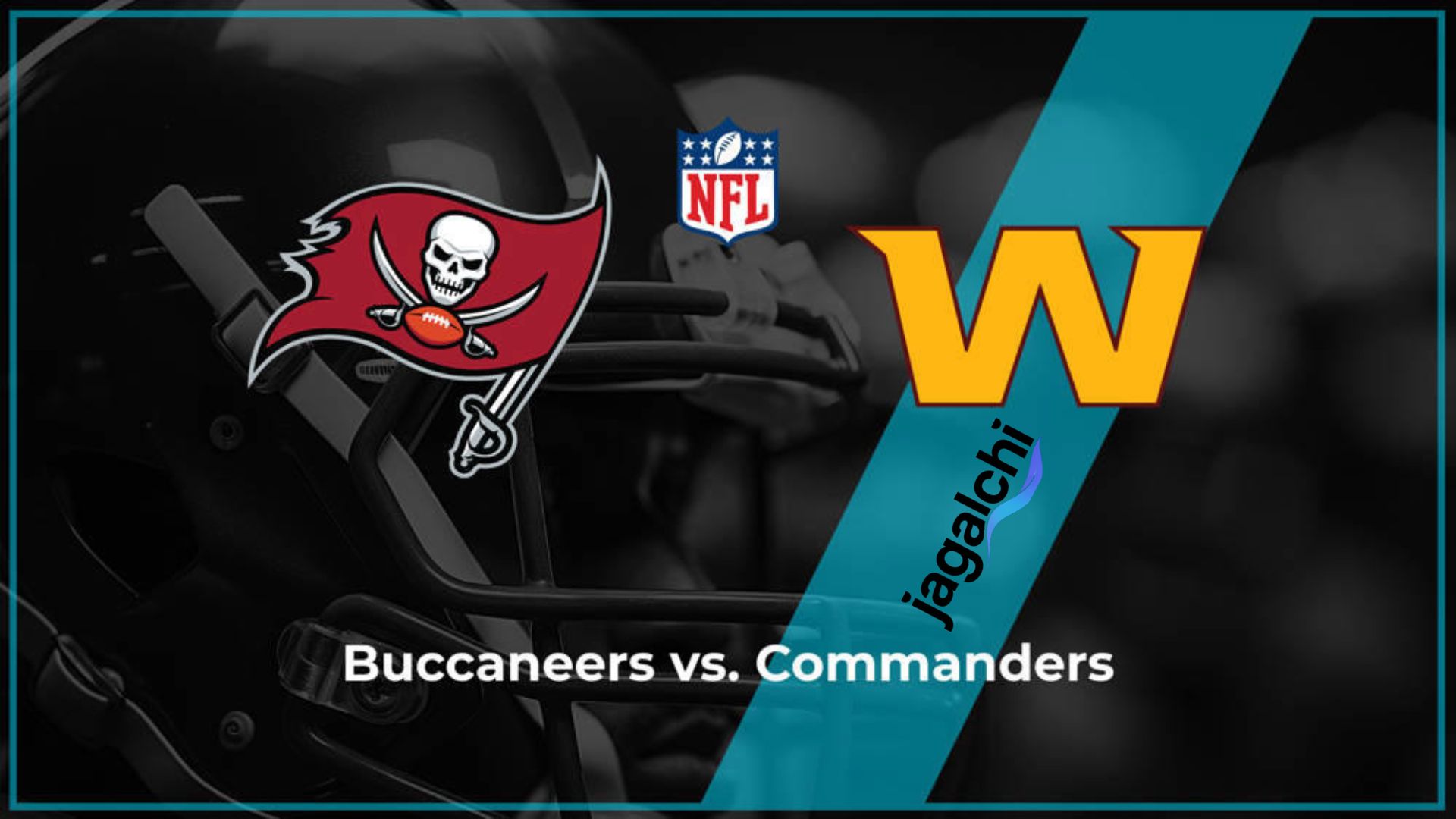The recent confrontation between the Washington Commanders and the Tampa Bay Buccaneers was not just a football match, but a proclamation of stamina, execution and strategy. Both sides were eager to demonstrate their development as they entered the match, and the resultant score-line showed that it was a close-to-the-wire game. In this article, we’ll break down the full washington commanders vs tampa bay buccaneers stats, exploring team performances, individual highlights, and analytical insights that shaped the outcome of this thrilling encounter.
Overview of the Game
The game between the Commanders and Buccaneers witnessed two teams possessing styles that differed. Washington depended on punitive instincts, successful 3 rd down conversions and sound defensive formations. Tampa bay, however, wanted to dominate the game through explosive action and offensive violence. The washington commanders vs tampa bay buccaneers stats clearly illustrate how control and consistency triumphed over occasional brilliance.
Washington also completed the game with 350 yards of offense as compared to Tampa Bay who had 284. The Commanders had almost 35 minutes with possession whereas Tampa Bay had over 600 yards per play on average. That was the strength which enabled Washington to control speed and restrict rhythm of the Buccaneers on attack.
Offensive Analysis
The quarterback of Commanders gave one of his most calm efforts of the season with 24 out of 35 pass completions and 268 yards and two important touchdown pushes. The fact that he is able to read through the blitz packages of the city of Tampa Bay and acclimate really mattered. When you analyze the washington commanders vs tampa bay buccaneers stats, one major takeaway is Washington’s balance between passing accuracy and smart play-calling.
The offense of the Tampa Bay was efficient, however, time of possession was a limiting factor. Their quarterback made 183 yards on 15 out of 18 passes with great accuracy but little number of opportunities. The Buccaneers had an average of 6.5 yards per play, which was low, however, their short drive and failure to convert on third down were detrimental to their scoring capability.
Washington had 69 plays on offense as compared with 44 in Tampa Bay. Such a colossal disparity highlights the fact that Washington was playing a game that allowed him to maintain the drives and tire the defense of the Buccaneers. The offense of the Commanders was best characterized by the priority on short passes, screening, and running on time to keep the chains rolling.
Running Game Insights
On the ground, Washington managed 82 rushing yards on 33 carries, while Tampa Bay totaled 101 yards on 25 attempts. Although Tampa Bay’s running backs had a higher per-carry average, Washington’s persistence in the ground game was vital in managing the clock. The washington commanders vs tampa bay buccaneers stats show that even a modest rushing attack can be decisive when combined with efficient time management.
The Commanders used their running plays strategically—particularly on early downs—to set up manageable third-down situations. This balance forced Tampa Bay to stay honest on defense, preventing them from focusing solely on the pass rush.
Key Moments That Defined the Game
Several defining moments shaped the outcome of the match. Washington capitalized on a Buccaneers fumble early in the third quarter, turning the turnover into three valuable points. Later, a critical third-down completion kept a late fourth-quarter drive alive, allowing the Commanders to drain the clock and kick the game-winning field goal.
In contrast, Tampa Bay’s mistakes proved costly. A false start on a crucial fourth-and-short and a missed field goal attempt shifted momentum firmly in Washington’s favor. The washington commanders vs tampa bay buccaneers stats reflect how small errors can drastically affect the result in a closely contested game.
Defensive Performances
Defensively, Washington played disciplined football. They focused on containment, ensuring Tampa Bay’s explosive receivers couldn’t stretch the field. The Commanders registered multiple quarterback pressures, including two sacks that disrupted the Buccaneers’ tempo. Their linebackers also excelled in coverage, limiting yards after catch and forcing quick decisions.
Tampa Bay’s defense started strong, applying pressure on the quarterback early, but fatigue became evident as the game wore on. Washington’s long drives wore down their defensive front, reducing the Buccaneers’ effectiveness in the second half. The washington commanders vs tampa bay buccaneers stats confirm that Washington’s defense won the battle of endurance.
Special Teams and Situational Football
Special teams quietly played a crucial role in the outcome. Washington’s kicker was flawless, converting all his field goal attempts, including the decisive one in the final minutes. Punting and field positioning were also in Washington’s favor, as they consistently pinned Tampa Bay deep in their own territory.
Tampa Bay’s special teams had mixed results — while their return unit gave them favorable field position at times, missed opportunities in kick coverage proved costly. Situational awareness, particularly in late-game clock management, leaned heavily toward Washington, as reflected in the washington commanders vs tampa bay buccaneers stats.
Time of Possession and Third-Down Efficiency
The most significant statistical advantage Washington held was time of possession. Controlling the ball for more than 35 minutes compared to Tampa Bay’s 24 minutes was the key to their victory. On third downs, Washington converted 8 of 15 attempts, while Tampa Bay managed just 5 of 9. The Commanders’ ability to stay on the field directly led to more scoring opportunities.
These figures highlight how a well-structured offensive approach can neutralize even the most explosive opponents. When looking deeper into the washington commanders vs tampa bay buccaneers stats, it becomes clear that Washington’s third-down dominance and extended drives created the foundation for their win.
Red Zone Efficiency
Red zone execution often decides games, and this one was no different. Washington converted on both of its red zone trips, turning them into touchdowns and crucial points that separated the two sides. Tampa Bay reached the red zone three times but only came away with one touchdown and one field goal. Missed opportunities inside the 20-yard line were decisive in determining the outcome.
The Commanders demonstrated excellent play design near the goal line, using quick slants and motion plays to confuse defenders. The washington commanders vs tampa bay buccaneers stats highlight how these subtle execution differences made a major impact.
Individual Highlights
- Washington QB: Accurate, calm, and decisive. Finished with 268 passing yards and two touchdown drives.
- Tampa Bay QB: Highly efficient with limited opportunities, completing 83% of his passes.
- Washington Defense: Recorded two sacks and one forced turnover.
- Tampa Bay Rushing Attack: Averaged over four yards per carry but lacked consistency in crucial moments.
Coaching and Strategy
Coaching decisions were another determining factor in the outcome. Washington’s coaching staff focused on tempo control, short-yardage success, and field position. Their patience paid off as Tampa Bay’s defense struggled to sustain energy late in the game.
Tampa Bay’s aggressive style was exciting but ultimately risky. They relied on explosive plays and vertical passes, but their inability to sustain longer drives allowed Washington’s defense to adapt and anticipate plays. The coaching difference is evident throughout the washington commanders vs tampa bay buccaneers stats, where Washington consistently won the efficiency metrics.
Advanced Analytics and Game Flow
Looking beyond basic numbers, Washington’s success can be attributed to their positive Expected Points Added (EPA) per drive. Their ability to turn drives into points—even through field goals—proved crucial. Meanwhile, Tampa Bay’s high yards per play did not translate into scoring consistency.
In terms of win probability, Washington’s odds increased significantly after their third-quarter turnover recovery. From that point onward, the momentum shifted permanently in their favor. The washington commanders vs tampa bay buccaneers stats reflect a clear example of how consistent performance outweighs individual explosiveness in determining game outcomes.
Historical Context
This matchup added another dramatic chapter to a long-standing rivalry between these two franchises. Over the years, games between Washington and Tampa Bay have been tightly contested, often decided by one score or less. This game followed that tradition, providing fans with another competitive showdown that emphasized resilience and tactical depth.
The washington commanders vs tampa bay buccaneers stats from this encounter reaffirm how closely matched these teams are when execution and discipline take center stage. Every yard, every drive, and every decision carried weight.
The washington commanders vs tampa bay buccaneers stats tell a complete story — one of consistency over chaos, control over speed, and execution over aggression. The combination of the balanced offensive strategy as well as the clever defensive plan eventually gave Washington the upper hand in one of the most hotly contested events of the season.
These numbers will be invaluable lessons as the two teams go ahead. Washington demonstrated that ownership and patience are crucial, whereas Tampa Bay will seek to transform their effectiveness into a long-term scoring. In every way, the washington commanders vs tampa bay buccaneers stats capture the essence of modern NFL competition — where precision, endurance, and smart football make all the difference.
Final Thoughts
Ultimately, the battlefield was won by the hard work of Washington, his ability to manage the clock, and his ability to perform in high-pressure situations. They did not create the most exciting plays, but the systematic nature of the Commanders delivered a win that was well deserved. The explosive nature of the Tampa Bay style was promising, but it also demonstrated the risks of using big plays only.




